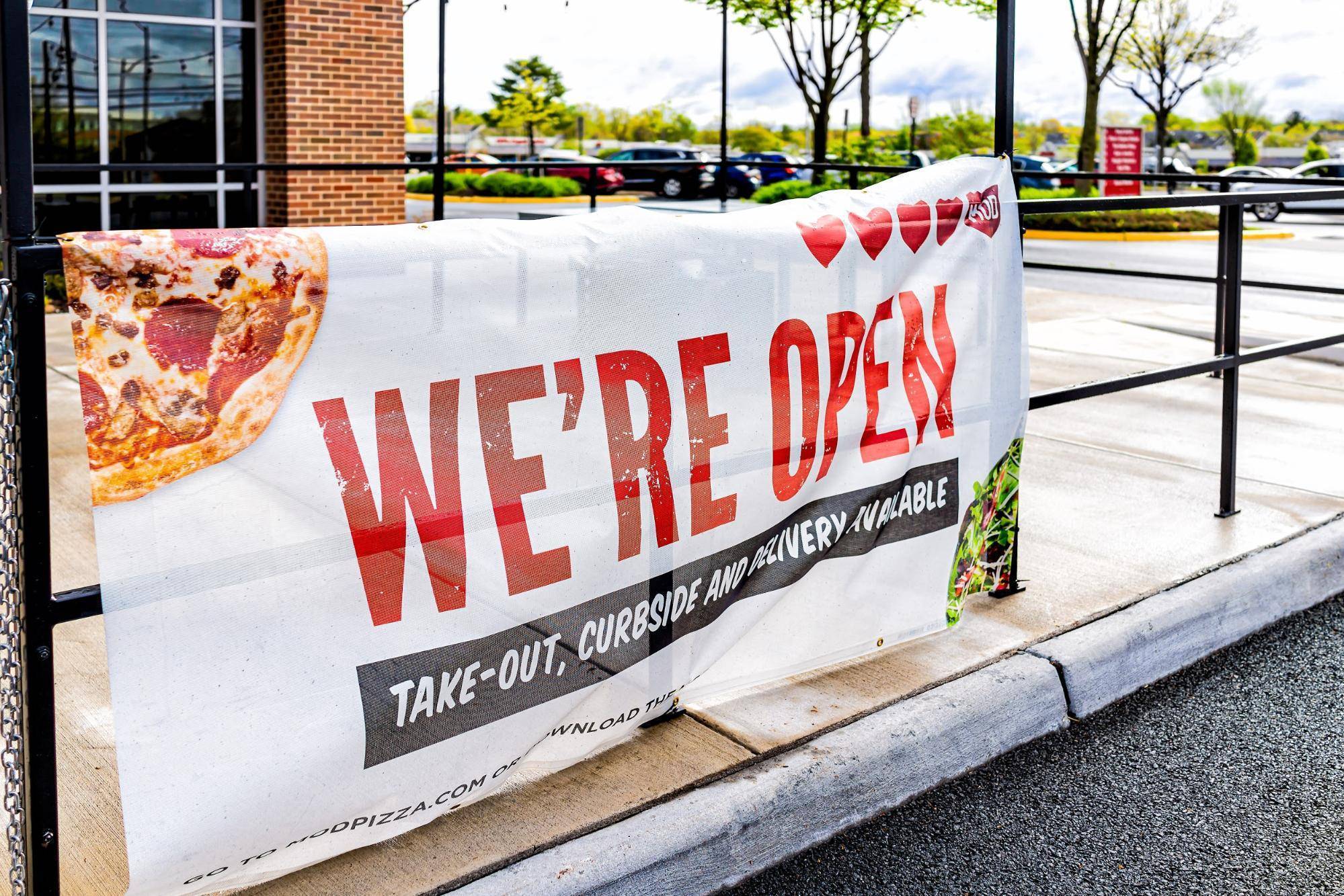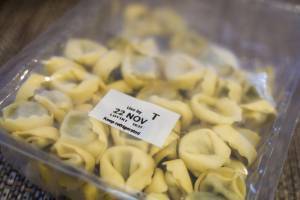
Watching for—and responding to—disruptive technology and changing consumer interest factors into business decisions every day. But the coronavirus pandemic changed almost everything.
Countries locked down. Consumers became hoarders. Business travel stopped.

Stephen Buchanan is a Business Development Manager at Kao Collins
Few leaders or strategic planners could have envisioned the worldwide disruption from the spread of Covid-19, but finding ways to endure and thrive when these events happen is part of strategic planning and visionary leadership.
The industrial inkjet printing industry was no exception. Kao Collins, which manufactures inkjet inks for commercial printers, has seen significant increases in orders for some inks and decreases for other inks.
“We’re adapting and finding new ways to navigate the new normal now,” said Stephen Buchanan, Business Development Manager at Cincinnati-based Kao Collins.
A research and development chemist, Buchanan moved from the lab at Kao Collins into his new role as Business Development Manager in January, before the pandemic upended business and life in general.
He discusses what he’s seen so far in the inkjet printing industry, and how the industry is adapting:
Demand for Food Packaging Inks is Growing
 As the pandemic took hold, consumers stockpiled more than toilet paper—packaged food was also disappearing from store shelves fast. Consequently, the demand for food grade inks often used in food packaging increased dramatically, as food producers struggled to keep pace.
As the pandemic took hold, consumers stockpiled more than toilet paper—packaged food was also disappearing from store shelves fast. Consequently, the demand for food grade inks often used in food packaging increased dramatically, as food producers struggled to keep pace.
“Flexible packaging and labels are definitely booming right now,” Buchanan said.
Likewise, health-conscious consumers around the world bought up over-the-counter medicines. Pharmaceutical and medical-supply companies worked at a faster pace to supply hospitals.
Inkjet Inks for Food Packaging
While some manufacturers and distributors were forced to close, Kao Collins continued production as an essential business to supply inks for packaging and labeling medical and pharmaceutical items.
The company worked extra shifts to meet customer demand.
“We wanted to show our customers we were here to support them,” he said.
One ink distributor that was shut down contacted Kao Collins to help supply a customer. Inks were shipped directly to the end-user.
“It shows that in the ink industry, we’re collaborating; we’re working together.”
Wide-Format Printing Dips, Then Rebounds
 Trade shows around the world were canceled, and wide-format commercial printers initially took a big hit. Their printing business depended on orders for banners used during conventions and in-person events.
Trade shows around the world were canceled, and wide-format commercial printers initially took a big hit. Their printing business depended on orders for banners used during conventions and in-person events.
Stores also stopped ordering promotional banners.
This industry is an example of how the sector could adapt, Buchanan said.
“Social distancing” became the buzzword around the world. Essential retail stores needed to remind their customers to keep six or more feet of space between each other. To do that, they turned to wide-format printers to print floor decals.
When restaurants began offering carry-out service, they ordered banners that shouted “We’re open!”
Buchanan saw the work firsthand, from floor and window decals to bathroom signage.
“Going out in public, I’ve seen different printing and interesting signs that say ‘stay six feet away’ or ‘stand here.’” The new normal, he said, “allowed wide-format printers to forge a new path forward and really make up some volume.”
Direct Mail Takes A Direct Hit
With unemployment increasing and consumer spending power dropping, companies began cutting their marketing budgets to reduce spending on direct mail advertising.
High-speed direct mail printing of brochures, pamphlets, and fliers slowed, Buchanan said. But he expects the direct mail segment to bounce back.
 There’s a good reason for that optimism. A 2016 study by the United States Postal Service found that 40% of the lucrative millennial demographic reads direct mail thoroughly, compared to a very modest 18% for non-millennials.
There’s a good reason for that optimism. A 2016 study by the United States Postal Service found that 40% of the lucrative millennial demographic reads direct mail thoroughly, compared to a very modest 18% for non-millennials.
Another study by Access Development, a company that manages networks of discounts and loyalty programs, found that direct mail effectively supports brand loyalty among millennials.
“All the industries have been finding a way to adapt,” Buchanan said.
eCommerce Serves Home-Bound Consumers
 Similar to grocery store sales, eCommerce sales soared as consumers moved their shopping habits online to reduce potential exposure to the highly contagious virus.
Similar to grocery store sales, eCommerce sales soared as consumers moved their shopping habits online to reduce potential exposure to the highly contagious virus.
This has increased the demand for inkjet inks from the eCommerce sector, since e-tailers need inks for direct printing on corrugated boxes and labels used on secondary packaging.
Statistics Canada, a government agency, found that consumers flocked to eCommerce during the lockdown. May 2020 sales more than doubled year-over-year, an increase of almost 111%.
Short-run Product Labeling Inks – Beyond Budweisers and Miller Lights
 Craft breweries and regional wine producers are hitting the mark with consumers. Both often use inkjet printing to produce eye-catching labels, especially for seasonal and special releases. Inkjet printing is more cost-effective for producing the shorter runs of the labels needed for bottles.
Craft breweries and regional wine producers are hitting the mark with consumers. Both often use inkjet printing to produce eye-catching labels, especially for seasonal and special releases. Inkjet printing is more cost-effective for producing the shorter runs of the labels needed for bottles.
“It’s fun to see all the different labels on the shelf, knowing that some of these are being done with inkjet,” Buchanan said. “It’s very cool.”
Niche segments like those are not the only businesses turning to inkjet printing for packaging. With the explosion of product SKUs, even big brands are needing more labels in lower quantities.
Also, Buchanan said, brands now customize product packaging to appeal to unique customer tastes or regional marketing campaigns.
“Brand owners are really trying to get creative with their packaging,” he said.
Buchanan noted that higher-volume runs of inkjet printing are also profitable for converters.
Kao Collins Remains Customer-Focused
Throughout its long history, Japan-based Kao Corporation and subsidiaries have focused on innovation that results from the close relationships with customers. Kao Collins is no exception.
Since the onset of the pandemic, in-person visits with customers happen now on the web or on the phone.
“What I miss more than anything is jumping on a plane to go see our customers.”
–Stephen Buchanan
Some of the best information comes from the equipment operators, he says.
“The most interesting people I’ve spoken with are the press operators. They are running the ink through printing systems every day, so they have a lot of interesting information to share–how the ink performs, what the pluses and minuses are.”
Like many other companies, Kao Collins is adapting by staying connected to customers with FaceTime calls and video meetings on Microsoft Teams.
More Than Ink Sales
As the interview continued, Buchanan became introspective as he discussed what the new normal may look like for every industry.
“In the grand scheme of things, this is a lot bigger than inkjet. Anything we can do to help our customers, that’s priority number one,” Buchanan says.
“A little empathy goes a long way. That’s really what it’s all about.”
Contact Stephen Buchanan or other experts at Kao Collins to discuss your ink needs.






